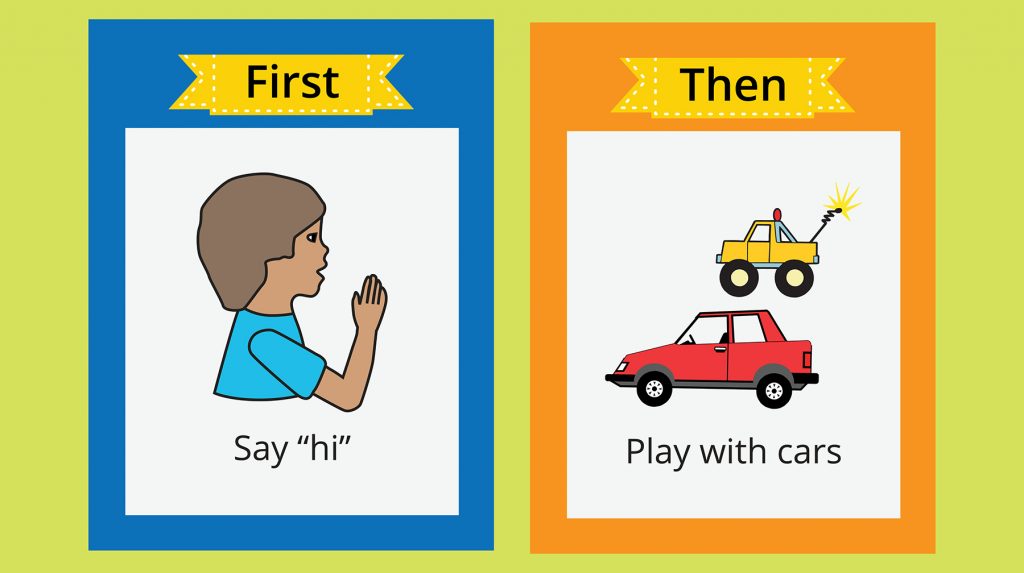
A First-Then Board is a visual display of something your child prefers that will happen after completing a task that is less preferred.
When is it useful?
A First-Then Board is helpful in teaching children to follow directions and learn new skills. A First-Then Board motivates children to do activities that they do not like and clarifies when they can do what they like. It addresses language understanding as well as compliance and behavior. A First-Then Board lays the language foundation needed to complete multi- step directions and activities and to use more complex visual systems.
How do I teach it and use it?
- Decide what task you want your child to complete first and place it in the “first” box.
- Choose or have your child choose from a choice board the preferred item or activity that he/she can have immediately after the “first” task is done and place it in the “then” box. This preferred item/activity should be motivating enough to increase the likelihood that your child will follow your direction.
- Present the board to the child with a brief, verbal instruction. Try to use the least amount of words possible. For example, before beginning the “first” task, say, “First, put on shoes, then swing.”
- If needed, refer to the board while your child is doing the task. For example, say “One more shoe, then swing” when your child is almost done. Avoid repeating the direction over and over.
- When the “first” task is completed, refer back to the board. For example, say “All done putting on shoes, now swing!” and immediately provide the preferred, reinforcing item or activity.
In order to teach children the value of the First-Then Board, you must give them the reinforcing activity or item after they complete the “first” task, even if you needed to prompt your child through completion. Otherwise, your child may not trust the board the next time you use it.
What if challenging behaviors occur?
If you think challenging behaviors may occur, introduce the First-Then Board for a task that your child usually completes willingly and successfully. If challenging behaviors occur, continue by physically prompting your child to complete the “first” task. Keep your focus on the task rather than on the challenging behavior. Even if it is necessary to prompt the child to complete the task, it is important to still provide the reinforcing item or activity. The focus of the board is on completing the “first” task, and not on addressing challenging behaviors.
If challenging behaviors become more difficult to control, it may be appropriate to consider behavioral consultation with a professional to address these behaviors directly.
View or download this worksheet in PDF format [English]
View or download this worksheet in PDF format [Spanish]